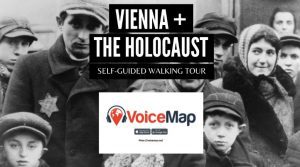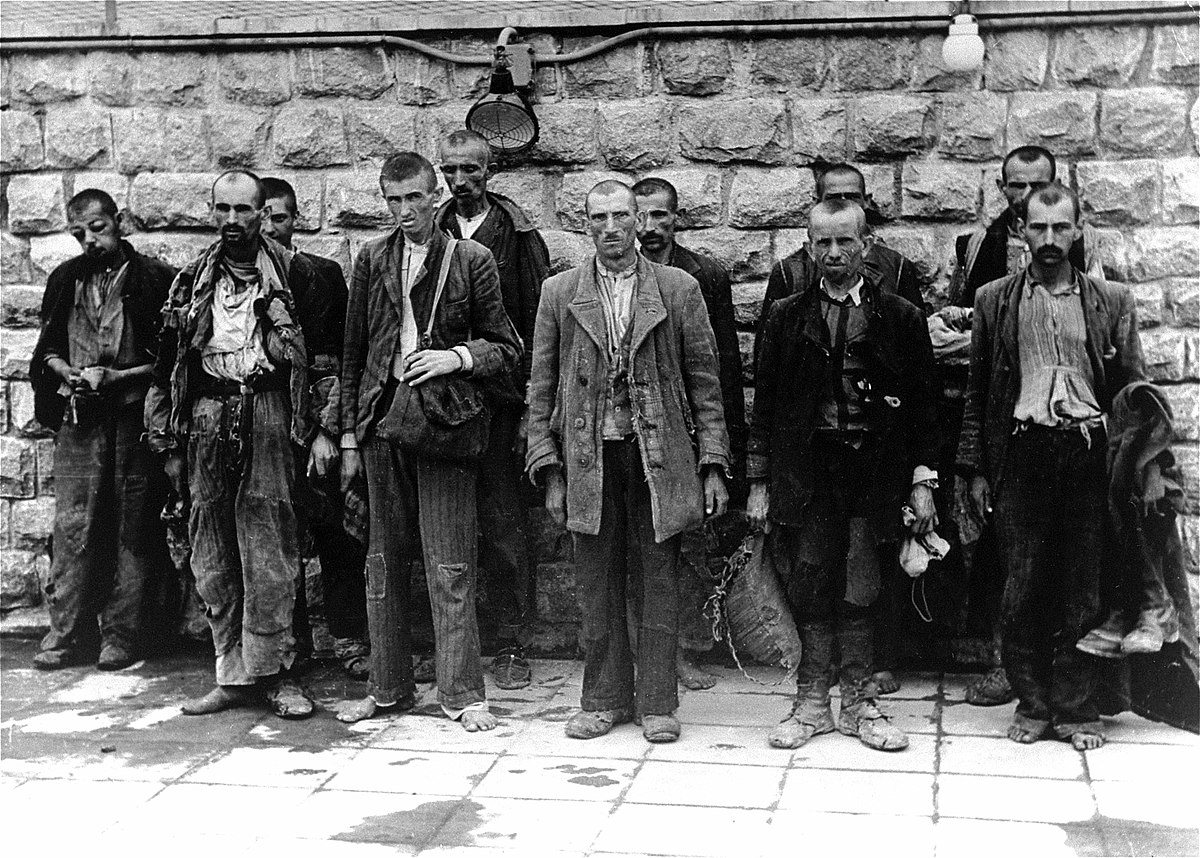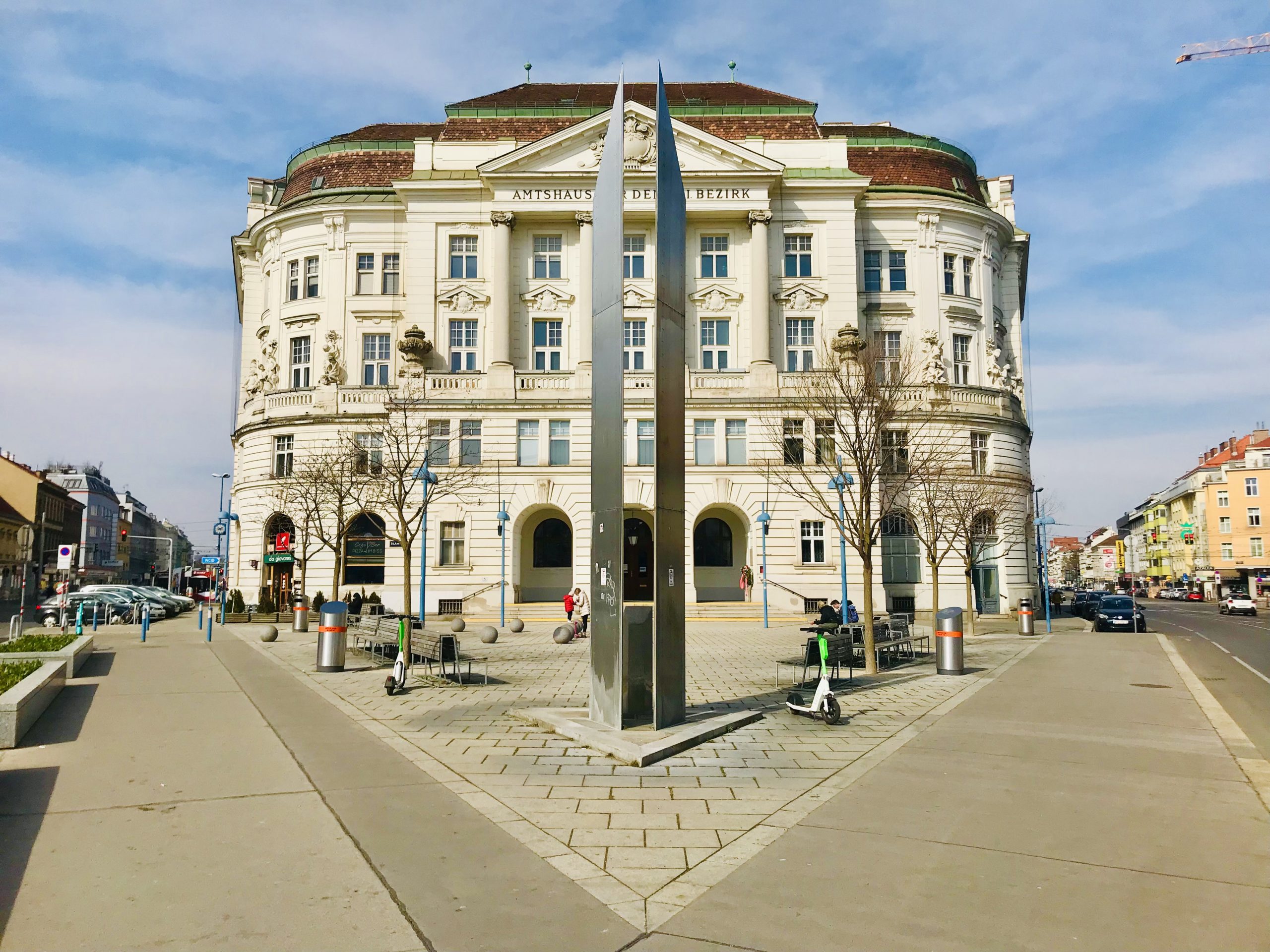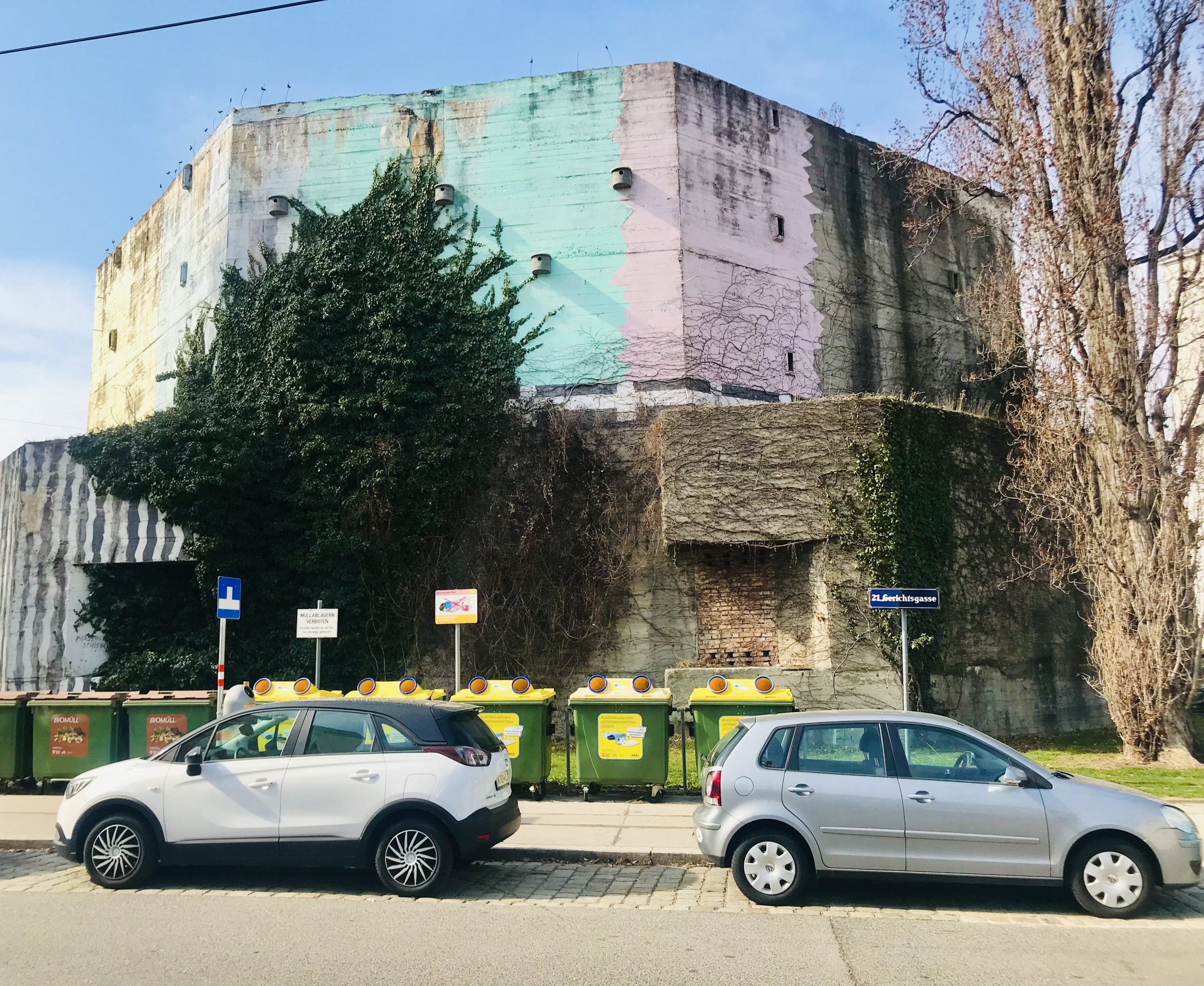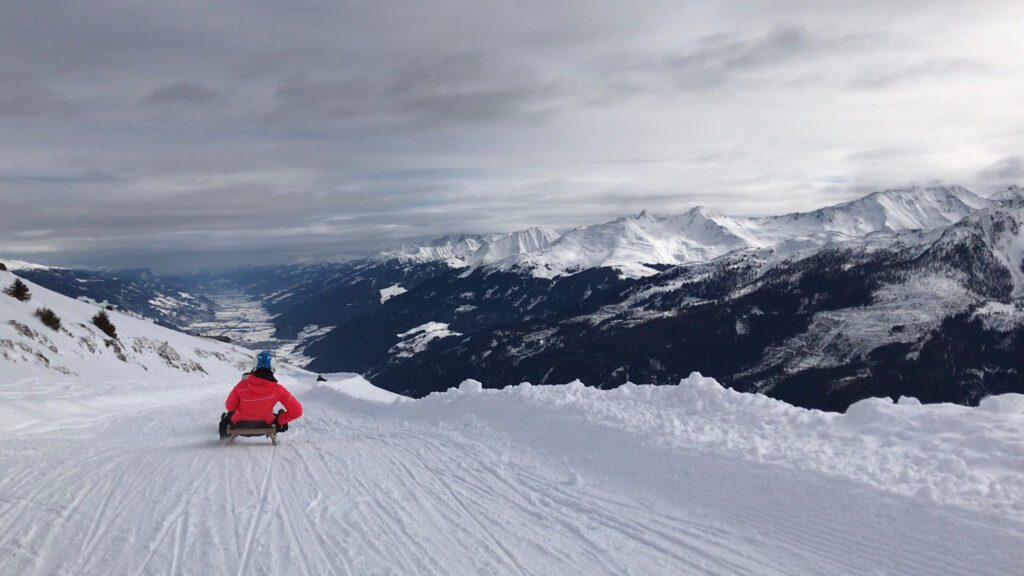
RACE WITH YOUR FAMILY AND FRIENDS DOWN THE WORLD’S LONGEST ILLUMINATED TOBOGGAN RUN AT THE WILDKOGEL RODELBAHN IN NEUKIRCHEN BRAMBERG
Map Neukirchen-Bramberg, Austria
Table of Contents
Imagine racing down a mountain, low to the ground with the cool wind in your hair, surrounded by spectacular scenery at every hairpin turn. Welcome to the Wildkogel Rodelbahn, the world’s longest illuminated Rodelbahn (toboggan) run. This 14-kilometer long run (8.7 miles) with a 1300 meter vertical descent — yes, that is correct — is one of Austria’s best-kept secrets. Tobogganing, sledding, rodelbahn, sledging, or whatever word you use, the translation is the same in any language: FUN!
The world’s longest illuminated Rodelbahn run is located in the Wildkogel Arena winter resort in Neukirchen-Bramberg — a scenic valley that borders the Hohe Tauern National Park. Breathtaking alpine beauty surrounds your every turn.
TRAVEL GUIDE TO WILDKOGEL ARENA: RODELBAHN AND SKIING
The Wildkogel Arena (which includes the ski resorts of Neukirchen and Bramberg) is nestled (hidden really) in a glacier at the top of the Wildkogel mountain. In addition to the world’s longest Rodelbahn run, the glacier also boasts incredible conditions for skiing and snowboarding. At 2224 meters, the peak of the Wildkogel is far out of view from the valley floor. One can observe the busy traffic of cable cars ascending and descending the mountain but not much else. Although the valley receives relatively little snowfall, in comparison the glacier is a winter wonderland.
What on Earth are you waiting for?!?! Get your car, train, plane, skateboard, and head to the Wildkogel Rodelbahn now!!!
ADDRESS: Wildkogelbahnstraße 343, 5741 Neukirchen am Großvenediger, Austria
OUR EXPERIENCE AT THE WILDKOGEL RODELBAHN
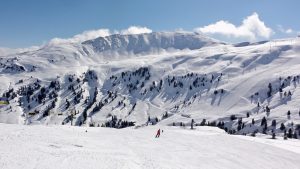 pixabay.com
pixabay.com
Remember those old wooden runner sleds from your childhood? They are alive and well in the Austrian Alps. They are used on the Rodelbahn (Toboggan Run) and it is an art form in Austria.
Using a toboggan can initially be quite intimidating. But….have no fear. With a little bit of practice, you will be zipping down the mountain in no time flat. Above all else, tobogganing is best enjoyed with family and friends. Our family made a special road trip to experience the world’s longest illuminated toboggan run — the Wildkogel Rodelbahn. Who wouldn’t???
The Wildkogel Rodelbahn and ski arena is well known to the locals. As a result, lodging can fill up quickly in the towns of Neukirchen and Bramberg.
We opted to stay at the Bauernhof Oberscheffau, an impeccably clean and comfortable Gasthaus on a traditional farm abutting the Hohe Tauern. A bit of time traveling, we enjoyed two nights in a 1920’s Gasthaus complete with vintage shortwave radio. Next to the tobogganing, our teenage son spent hours on end searching for radio broadcasts throughout Europe. Who needs the internet?
The owner, Norbert, gave the word “hospitality” a whole new meaning. On one occasion, he even stepped away from his kitchen to show our son his vintage 1980’s Trabant that we had spied in his barn.
After a leisurely drive to the town center of Bramberg, we easily found parking. The Parkplatz Smaragdbahn parking lot is conveniently located next to the finish line of the Wildkogel Rodelbahn. We walked one block to the Rodeltreff on 121 Museumsstrasse to rent our toboggans from the owner, Peter. After collecting our sleds, we made our way across the parking lot to purchase our tickets.
GORGEOUS SCENERY
 whitehousetravel.com
whitehousetravel.com
Bring a camera. The views from the cable car are breathtaking and the views from the toboggan run are even better. The hour-plus ride, YES, that’s right… the hour-plus ride down was incredible. After several runs, we caught the last cable car up the mountain (the last call is 4:30 pm) and took a well-needed break to enjoy some warm beverages.
The night quickly fell at Wildkogel and the Rodelbahn was completely floodlit. Although we were exhausted, we excitedly raced a group of school children down the mountain until we reached the Zwischnzeit, a unique rustic Alpine hut, where we relaxed over an incredible dinner. (By the way, the Zwischnzeit was named the best après-ski hut in 2012 by skiresort.de.)
Our teenage son gave high marks to the steak on toast which he devoured. Our tummies full, we crossed the finish line with gusto and returned our sleds. If you are looking for something exciting or to simply break up your ski week, then the Wildkogel Rodelbahn is it.
RENTING A TOBOGGAN AT WILDKOGEL RODELBAHN
Do not fear — renting a toboggan has never been easier. CLICK HERE for a list of the five toboggan rental shops near the Wildkogel Rodelbahn.
PRO TIP 1. RODELTREFF. We rented our toboggans from the Rodeltreff on 121 Museumsstrasse. It was steps away from the toboggan run finish line. Peter the owener was a no muss no fuss kind of guy and has us equipped in minutes. We returned the toboggans back after hours — no worries — Peter gave us the combo lock to the building. The price was right and Peter was super flexible.
rodeltreff.at
OTHER PRO TIPS FOR VISITING THE WILDKOGEL RODELBAHN
Do not go anywhere near the Wildkogel Rodelbahn before reading our PRO TIPS below:
PRO TIP 2. NIGHT TOBOGGANING. You are seriously missing out if you do not toboggan down after dark. The floodlit trail is peaceful and it is an entirely different challenge. Don’t forget the best part of tobogganing is stopping at one of the fine Alpine Huts for a beverage and some food. Lastly, after exiting the cable car, on your right is the Wildkogel mountain peak. You can hike to the top — go for it! Also, don’t be in a rush to get down. Stop and enjoy the scenery — it is truly amazing.
PRO TIP 3. HOW TO USE A TOBOGGAN IN 3 EASY STEPS. So… there are several schools of thought on this subject. Here is a quick primer to get you and running: 1) place your center of gravity towards the rear of the sled, 2) hold the reins tightly — if you are turning left, yank on the left rein and throw the weight of your body into it, and 3) place your feet flat on the ground and use them to steer and stop.
PRO TIP 4. CABLE CARS. Wildkogel Arena cable car hours are 8:45 a.m. – 4:30 p.m. The last car departs the ground station at 4:30 p.m. If you are at the top and have no skis or toboggan, you are likely hiking down (several hours).
PRO TIP 5. PARKING. Parking is free at the Parkplatz Smaragdbahn parking lot next to the Wildkogel Rodelbahn ticket office and cable car.
PRO TIP 6. ADMISSION. If you plan to go down the Rodelbahn three or more times, you will save money purchasing a Day Pass.
PRO TIP 7. The Wildkogel Rodelbahn was incredibly accessible and caters to all ages. The Alpine huts are comfortable and spacious and serve warm beverages, meals, and desserts. One downside, the “Austro-pop” music (traditional Austrian music mixed with techno) is always played loud and can be overbearing.
NEAR THIS PLACE
SCENIC DRIVE IN LOWER AUSTRIA. Rolling hills, blissful meadows, and majestic mountain views make this gorgeous scenic drive through the Mostviertal region in Lower Austria a must.
ALMABTRIEB IN SALZBURGER LAND. Almabtrieb is a once-a-year Alpine tradition in a gorgeous village setting. This travel guide focuses on Almabtrieb in Austria.
MEMORIAL OF THE IRON CURTAIN. The last remaining section of the Iron Curtain is preserved in the small village of Čížov along the border where East once met West.
KRIMML WATERFALL Just 15 minutes from the Wildkogel Rodelbahn is the Krimmler Wasserfälle or Krimml Waterfall. With a total height of 380 meters (1,247 feet), the Krimml Waterfall is the highest waterfall in Austria. The falls are on the Krimmler Ache River near the village of Krimml in the Hohe Tauern National Park. There is a 4 km (2 ½ miles) long footpath to the bottom of the waterfall and a trail leading to the top of the waterfall where there is a viewing platform.
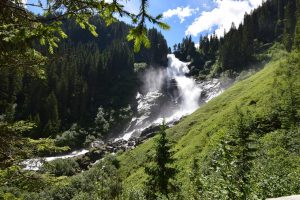 pixabay.com
pixabay.com
Night after night during the summer of 1947, 5,000 Holocaust survivors trekked up and over the Krimml Waterfalls. These displaced refugees, who were interned at barracks 40 miles away, slipped into a convoy of trucks that smuggled them to the base of the waterfall and the start of a 1,246-foot climb. Though poorly equipped for mountaineering and some carrying children, the Jews trudged in darkness across boulders and snowfields of the Alps to their freedom in Italy and onto Aliyah Bet ships bound for Palestine. A simple memorial in Hebrew along the footpath memorializes their escape.
Since 2007, the Alpine Peace Crossing is an annual event (on the last Saturday in June or first Saturday in July) that retraces the steps of the Jews over the Waterfall to their freedom. Want to learn more? Check out these two links for more information:
VOICEMAP | VIENNA SELF GUIDED WALKING TOUR. Want to learn how the Mossad operation to bring Nazis like Adolf Eichmann to justice originated in Vienna? Check out our VoiceMap self guided walking tour: VIENNA + THE HOLOCAUST: FROM TRAGEDY TO JUSTICE. You can preview it for FREE. Start point is Nestroyplatz on the U1 red line in the 2nd District.
RELATED ACTIVITIES
STUHLECK SKI RESORT. At the Stuhleck Ski Resort in Semmering, you can ski with family and friends in the Alps within one hour from Vienna.
JASNA-CHOPOK SKI RESORT. A world caliber ski resort at an affordable price. Trails are well groomed and scenic. If you enjoy going off piste, then this is the place for you. The entire back half of the mountain is waiting for you. Home of the Women’s Downhill Skiing World Cup Championships.
BEST PLACES TO STAY
BAUERN OBERSCHEFFAU. An impeccably clean and comfortable traditional Gasthaus on a farm abutting the Hohe Tauern National Park. Amazing hospitality, reasonably priced, incredible views, and farmhouse with a petting zoo and pony rides. ADDRESS: Scheffau 96, 5741 Neukirchen am Großvenediger, Austria.
ERHOLUNGSHOTEL KALTENHAUSER. Family-owned since 1723, the Hotel has an incredible location: 1 km from the Kitzbuhel Alps Panoramabahn cable car and 5 km from Wildkogel Smaragdbahn cable car. Spa with heated indoor pool, sauna, and spa facilities. ADDRESS: Hollersbach 17, 5731 Hollersbach im Pinzgau, Austria.
RESIDENZ WILDKOGELBAHNEN TOP 10. 2 km from the Wildkogel Smaragdbahn cable car. Modern with mountain views, sauna and FREE Wifi, and FREE parking. ADDRESS: Wildkogelbahnstraße 280 TOP 10, 5741 Neukirchen am Großvenediger, Austria.
WILDKOGEL RESORTS – THE WILDKOGEL. 20 meters from the Wildkogel Smaragdbahn cable car in Bramberg. Modern, contemporary and spacious apartments. Indoor/outdoor pools, sauna, and spa facilities. ADDRESS: Senninger Feld 35, 5733 Bramberg am Wildkogel, Austria.
RESOURCES
BB Wildkogel-Arena App (Apple and Google Play Store)
![]()



